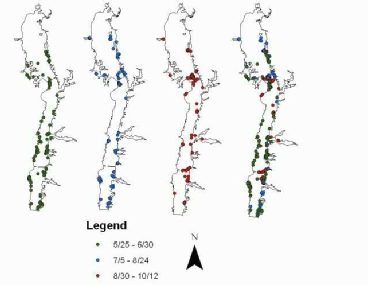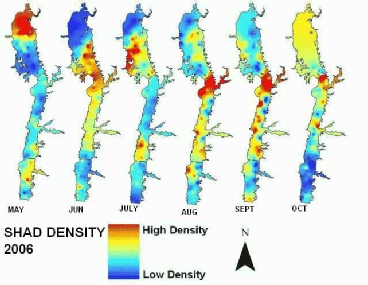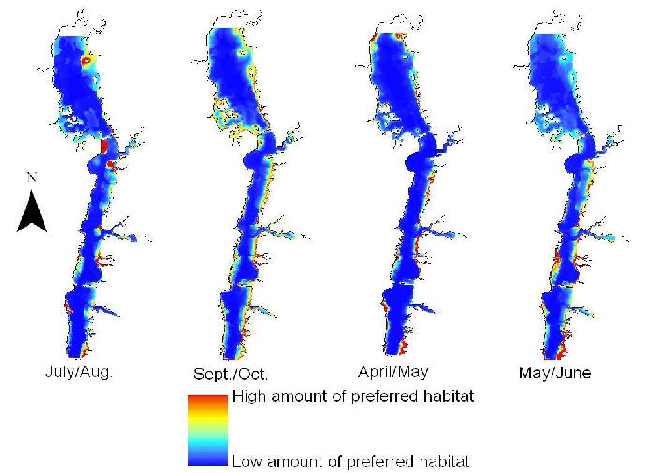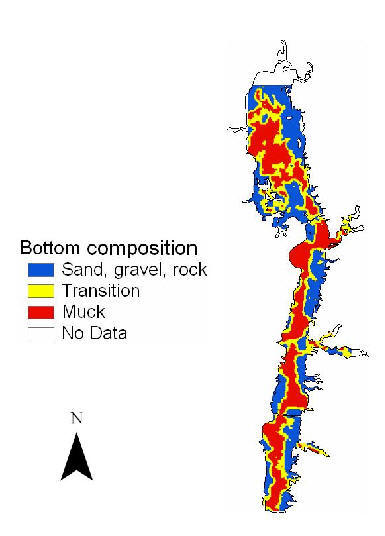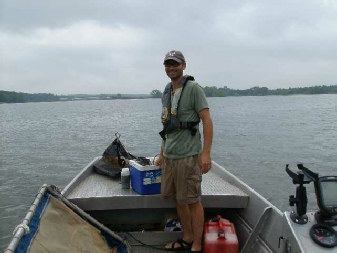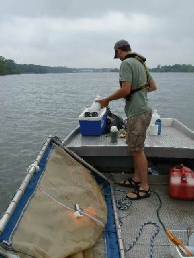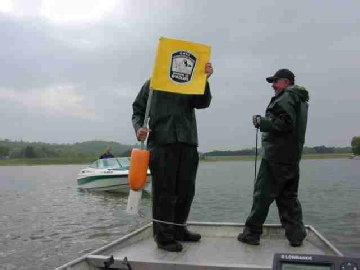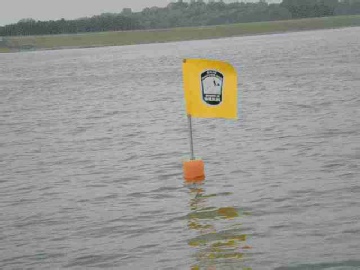FISH and TALES
Home of “The Hoover Fishing Report”
This site owned and operated by Jim Horan and is copyrighted. Copyright © 2025 All Rights reserved.
Summary of Saugeye Study - Hoover 2006-7
An Ohio State University graduate student is studying the habitat preferences and predator-prey interactions of saugeye in Hoover Reservoir. The overall goal of the study is to characterize saugeye habitat and the distribution of their main prey, gizzard shad, during different seasons. The results will contribute to the ability of fisheries managers to consider habitat and prey availability when allocating saugeye stocking. As a result of improved stocking decisions, better recreational fishing should also be an outcome of the project. Habitat maps of Hoover Reservoir, produced from data collected for this project, will be made available to the public at the end of the project.
Work in progress
As part of this study, researchers are surgically implanting two types of tags in saugeye. One type of tag continuously records the water temperature and depth of saugeye locations. The second type of tag is a radio-telemetry tag, which allows the researchers to actively track tagged saugeye. As of April 13 2006, 25 saugeye (20-25") were tagged and are currently residing in Hoover. During mid-May, an additional 20 saugeye (10, 10-14-inches and 10, greater than 14-inches) will be tagged, bringing the total to 45 tagged fish. For the next year and a half, supplemental tagging will ensure 45 tagged saugeye will be in Hoover at all times. Because Hoover is heavily fished, the researchers are enlisting the help of anglers. It is very important all tagged saugeye that are caught get returned, whole, to the researchers. All tagged fish have a bright yellow external tag with contact information. (Some, but not all, also have an external antenna.) To compensate anglers for returning the entire saugeye, a $100 reward is being offered for each whole, tagged fish. Tagged saugeye should be refrigerated, NOT FROZEN. Tagged saugeye can be dropped off at The Old Dutchman bait shop (904 S. Sunbury Road Westerville, OH 43081) the City of Columbus building (7600 Sunbury Road Westerville, OH 43081), or any Ohio Division of Wildlife District office. Checks will be mailed in 4-6 weeks from The Ohio State University. The chances of catching a marked saugeye are very small (fewer than one in a thousand harvestable saugeye are tagged); however, if a tagged saugeye is caught, it is crucial the entire fish be returned.
Signs have been posted around Hoover Reservoir and at The Old Dutchman bait shop. Business cards with a summary of what to do if you catch a tagged saugeye are available at The Old Dutchman or any City of Columbus Ranger should be carrying them.
This study continues through June 2007, although if a tagged saugeye is caught after that date, money will still be rewarded.
Shown above are the Shad density maps that were produced from the 2006 work of Cassie May and her team.
This is map showing seasonal location of tagged Saugeyes by Cassie May and her team in 2006.
2/28/08 - From Cassie May - These are the maps that conclude her study and that were presented at HFS X. The map of preferred habitat for Saugeye take into account available depths, slope, bottom sediments, Saugeye locations, and prey densities.
In 2008 and for next 2 years, Jahn Kallis will be conducting a Saugeye survial study at Hoover and other Cent. Ohio lakes. As we receive information from Jahn, we will pass it along here.
Jahn Kallis as an ongoing study of Shad densities, using nueston nets to collect fry in June '09.
Div. of Wildlife preparing to place warning flags
Flag positioned marking nets. Anglers are advised to stay at least 200 away from these markers.
